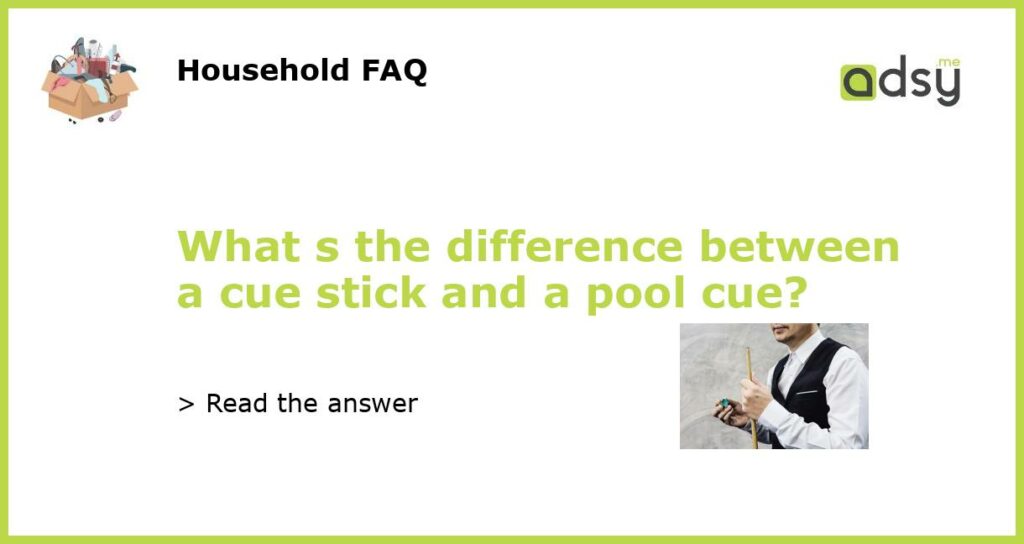The Basics of Cue Sticks and Pool Cues
Many people use the terms cue stick and pool cue interchangeably, but they are actually two different things. A cue stick is just a long stick used to hit a ball, while a pool cue is specifically designed for playing pool. Pool cues have several unique features that set them apart from other types of cue sticks.
The Anatomy of a Pool Cue
A standard pool cue consists of multiple parts, including the tip, ferrule, shaft, joint, butt, and wrap. The tip is the part of the cue that comes into contact with the ball, and it is typically made of leather. The ferrule is a small piece of material that sits between the tip and the shaft, helping to absorb shock and prevent damage to the cue.
The Differences in Design
Pool cues come in a variety of designs, with different lengths, weights, and balance points. The design of the cue can significantly impact how well it performs in the game. For example, a heavier cue may provide more power but less accuracy, while a lighter cue may be more precise but less powerful. The balance point of the cue can also be critical in determining the accuracy and control of shots.
Choosing the Right Cue for You
When choosing a pool cue, it’s essential to consider your skill level and playing style. A beginner may prefer a lighter cue with a more comfortable grip, while more advanced players may want a heavier cue with a stiffer shaft for added power. The cost of a pool cue can range widely, from less than $100 to thousands of dollars, depending on the materials used and the level of customization.
Caring for Your Pool Cue
Finally, proper care and maintenance are essential for getting the most out of your pool cue. This includes regularly cleaning the cue and tip, storing it in a protective case, and not using it to hit hard or abrasive surfaces. With proper care, a good pool cue can last for many years and provide hours of enjoyment on the table.






